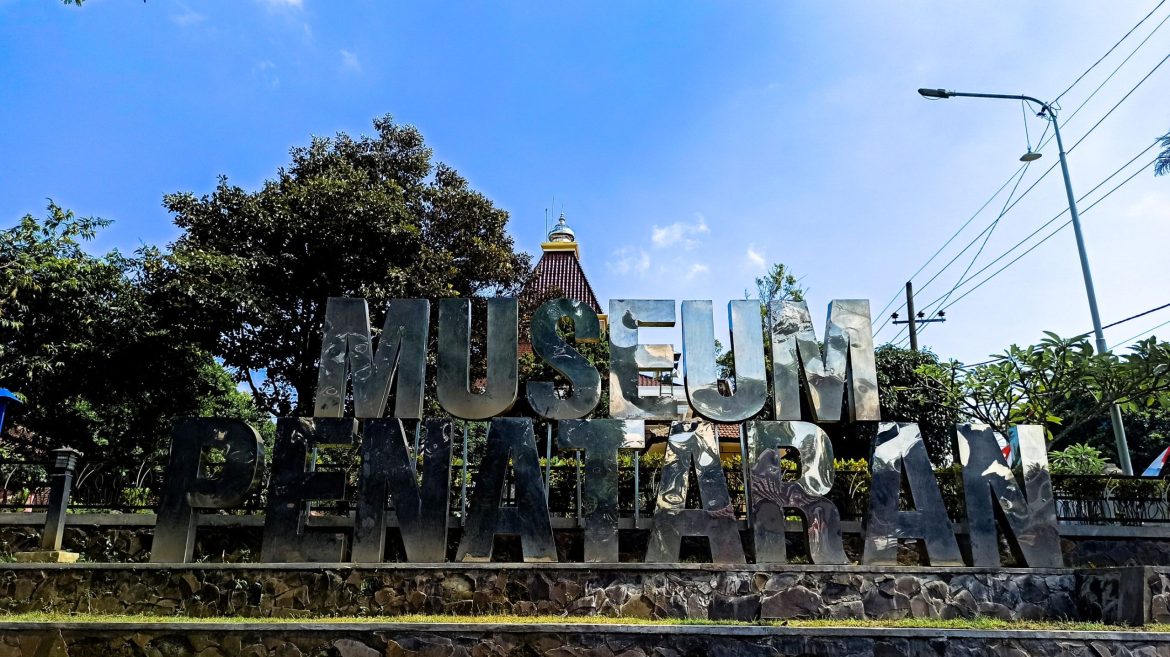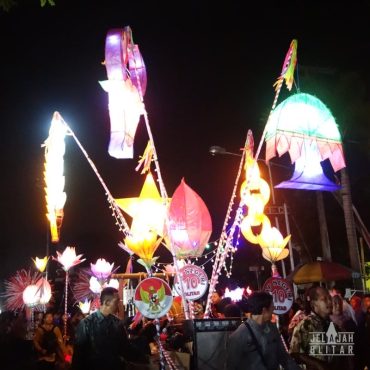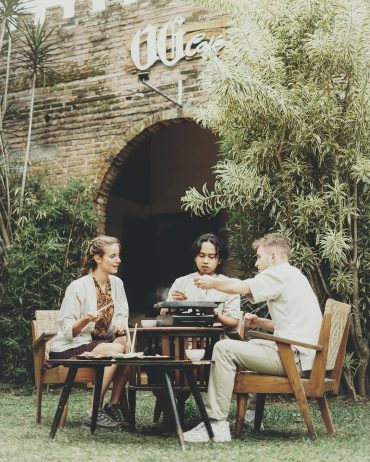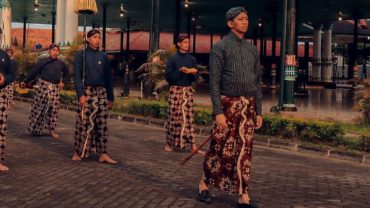When you first see the lion-headed statue at the Penataran Museum Blitara wide range of emotions may arise.
Its unique and slightly unusual shape might make you feel a little daunted.
However, great curiosity may also arise, fuelling the desire to know more about the meaning and history behind the statue.
To experience this for yourself, you can visit the Penataran Museum in Blitar.
There, the lion-headed statue is displayed with a collection of other statues.
The statue, which has collection number 121, measures approximately 81cm high, 34cm wide and 36cm thick.
Made from andesite stone, the statue is chiselled with delicate techniques that depict iconic and artistic details.
This lion-headed statue sits on a padma-shaped pedestal, known as padmāsana, and has a backrest or stela.
On the back of the head is a circle of divinity (sirascakra). The statue depicts a figure with a lion's face and scratches on the forehead that are believed to be trinetra.
This figure sits in a position where the soles of the feet touch each other (utkutikasana), with a distended stomach (tundila), and has four hands.
The two hands in front hold the abdomen, while the two hands behind hold objects: the right hand holds a string of pearls or prayer beads (aksamala) and the left hand holds an axe or parasu.
Overall, this figure is wearing luxurious clothes and beautiful jewellery.
Headdresses include a jatamakuta crown decorated with a skull and crescent moon (ardhacandrakapala) at the front, as well as a jamang.
Other jewellery includes necklaces (hara), snake-shaped body ornaments (upavita), belly bands (udarabandha), arm bands (keyura), hand bands (kankana), lower garments (antarvasaka) that reach the ankles, and anklets (padasaras).
This lion-headed statue is a representation of the Lord Ganesha in the form of Simha-Ganapati.
In this form, Ganesha is believed to be a medium to dispel negative thoughts, helping his devotees deal with problems calmly.
Iconographically, Simha-Ganapati is usually depicted with a mixed face of lion and elephant and has six to eight hands.
However, the local adaptations seen in the statues at the Penataran Museum indicate the adaption by past artists to the cultural characteristics of the archipelago.
The Meaning of Lion in Hindu-Buddhist and Archipelago Culture
Lions have significance in Hindu-Buddhist culture, both in India and the archipelago.
Considered the ruler of the forest, the lion symbolises strength and protection, perhaps due to its position as an apex predator with no natural enemies.
In groups, lionesses hunt while males protect, reinforcing the symbolism of the lion as protector.
The lion is often identified with the sun because of the golden yellow colour of its fur, symbolising nobility and royalty.
Hence, the lion is often a symbol of royalty that signifies majesty and pride.
In Hinduism, lions appear frequently in the Vedas and are embodied as divine figures such as Narasimha, the lion-headed incarnation of Vishnu.
Lions are also used as vehicles for gods and goddesses, such as Goddess Durga, and are often placed as guardians of the entrance to sacred buildings or the cornerstone of thrones to emphasise glory.
The lion, as a symbol of strength, nobility and protection, crosses cultural and religious boundaries, provides deep meaning in people's history and beliefs, and illustrates values that are respected and upheld.
Visiting the Penataran Museum and seeing the lion-headed statue can be an emotionally rich and diverse experience.
From awe to curiosity, these statues offer a window into the deep cultural heritage and beliefs of the past, as well as symbolism that is still relevant today.
Through its symbolic and iconographic interpretations, the statue is not only visually stunning but also offers an in-depth look into how past societies saw their world and the values they upheld.
Apart from statues, there are still many historical relics in Blitar that hold mysteries including De Karanganjar Koffieplantage, yang merupakan salah satu perkebunan coffee tertua di Indonesia, menyimpan banyak cerita dan misteri yang belum terungkap.
Di tengah kebun coffee, terdapat “Kolam Bintang,” sebuah pentagram yang terkait dengan spiritualisme dan mistisisme.
This pool is an attraction for visitors who are curious about the meaning and history behind the symbol.
In addition, Roemah Lodji, a historical building that is now a museum, is a silent witness to the history of the Freemason association in Indonesia.
In the Vredestuin area, there is an old tomb called "Mr Smith's Tomb," which is physical evidence of the presence of Europeans in the past.
The Gadhung Melati shrine, in the form of a mysterious tombstone, also attracts attention because the original identity of the tombstone is still unknown.
All this makes De Karanganjar Koffieplantage a place full of surprises and interesting historical discoveries.







